 Enter now our digital dreamer, a righter of studio malfeasance – a sort of John T. Chance or Hondo Lane or Ethan Edwards. He restores pictures.
Enter now our digital dreamer, a righter of studio malfeasance – a sort of John T. Chance or Hondo Lane or Ethan Edwards. He restores pictures.
Robert A. Harris, perhaps the world’s most distinguished film preservationist wants to get his hands on The Alamo. He has taken on the big dogs like Lawrence of Arabia, Spartacus and My Fair Lady and using his latest book of digital magic tricks has used modern technology to make them shine like, well, better than new.
Mr. Harris says that The Alamo is the highest profile studio film in the worst shape. He has preached non-stop to all of consequence that every day spent not restoring The Alamo is another day toward that film’s disintegration for all time. And, for some, he’s been saying it for too long.
The Alamo’s original negative is faded, missing a high percentage of its yellow layer, which controls blue and contrast, therefore yielding no true blacks and Crustacean-like facial highlights. Any attempt to pump color back into an analogue print turns the skies a muddy green, as yellow is added,” he said. “The negative also has additional damage due to improperly prepared black leader used in negative cutting, which has chemically attacked the emulsion through the two outermost dye layers. The original negative is unusable to make either prints or preservation elements. Add to those problems, a continuously moving discoloration coming in from both sides of the image.”

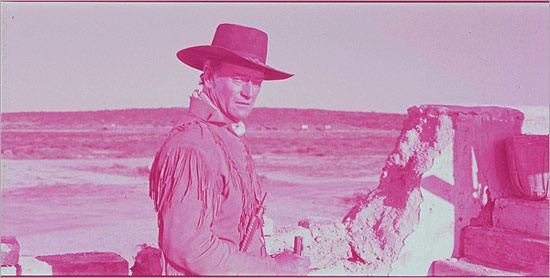
In an article he wrote for The Digital Bits in 2009 (see link), Harris explained how The Alamo was treated upon release.
“The Alamo was released to roadshow audiences with an original running time of 192 minutes plus Overture, Entr’acte and Exit music. For general release, the film was cut by 30 minutes,” he said.
Harris says that as Wayne himself was in Africa shooting Hatari, a picture into which he immediately went into to help stabilize his finances, Michael Wayne, who was John Wayne’s son and the president of his production company Batjac, along with The Alamo editor Stuart Gilmore shortened the movie themselves.
 “Because the 6 track audio could only be either cut or slightly remixed, a detailed fine cut was not an option. Those involved in the cut were led to believe that the extant 70mm prints would be trimmed and resounded, and new printing matrices produced for the 35mm release in the shorter form – but that the original negative would not be harmed or modified,” he said. “That is not what occurred. The original negative and all protection elements, inclusive of the 65mm separation masters, were cut to conform to the new 161-minute length; the trims and deletions were destroyed – and the original 65mm separation masters, which would normally have served as an ultimate backup, were improperly produced and have focus issues.”
“Because the 6 track audio could only be either cut or slightly remixed, a detailed fine cut was not an option. Those involved in the cut were led to believe that the extant 70mm prints would be trimmed and resounded, and new printing matrices produced for the 35mm release in the shorter form – but that the original negative would not be harmed or modified,” he said. “That is not what occurred. The original negative and all protection elements, inclusive of the 65mm separation masters, were cut to conform to the new 161-minute length; the trims and deletions were destroyed – and the original 65mm separation masters, which would normally have served as an ultimate backup, were improperly produced and have focus issues.”
According to Harris, for over 30 years the pre-cut Roadshow version was lost until, in 1991, a lone surviving 70mm print was found in remarkably good condition in a film exchange in Toronto. This version of the film was released both VHS and Laser Disc, both extremely poor cousins of the digital platforms films enjoy today, and was then, well, discarded. Trashed. Dumped. Left for dead.
And Harris, because he’s the best at what he does in the world and because, well, he loves movies, wants this darn thing fixed for audiences to enjoy all over again, even though he understands that Wayne’s epic is most certainly not in the same league as, well, Lawrence of Arabia.
“Unfortunately, that unique remaining 70mm print is now totally faded,” he said, “and to better prepare for its transfer for laserdisc decades ago, it was chemically treated, which exacerbates vinegar syndrome, which eventually destroys film. While modern Eastman elements are robust with a long life expectancy, this is simply not the case for films made before the creation of Eastman 5250 color negative stock in 1961. All Eastman color stocks created before that point fade. Some more, some less, dependent upon a number of technical and storage factors, but the absolute is – they fade.”
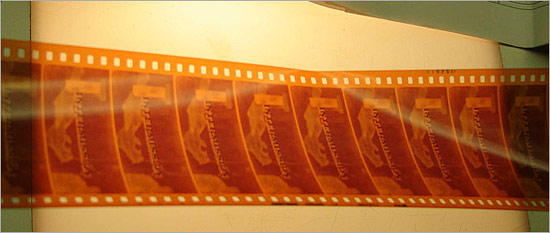
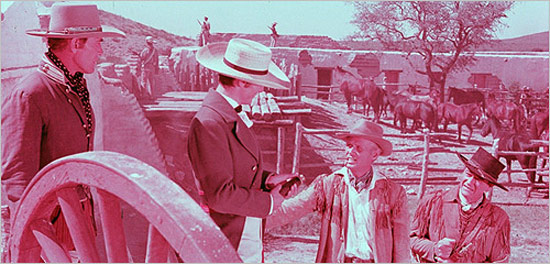
So Harris, for longer than he would care to admit, knows the problem and knows how to fix it. And he would be in the laboratory at this very moment strengthening the sparkle in the old Duke’s eyes, but for one thing – the studio who owns the movie, remember them?, refuses to pay for its refurbishing, or allow donations to be made to save the film.
“For whatever reason, they do not see the benefit in restoring their films,” Harris said.
A very recent plea to MGM on behalf of The Alamo by Harris was, well, dismissed.
“We had discussion about the studio finally allowing the use of outside funding, but then they doubled back, and decided to take a ‘wait and see’ attitude. ‘Wait and see,’ for The Alamo, means losing the film in its large format glory. If there is no restoration effort at this time, it means that there may never be a restoration effort,” Harris said. “Several people have raised the concept of going to outside sources for funding. MGM has no interest in this mission, even if the film turns into industrial waste.”
Here would be Harris’ plan for the restoration.
“Our work would take about 10 to 12 months and the final result would be two versions of the film – the original Roadshow and the General Release, both with Overture, Intermission, Entr’acte and Exit Music,” he said. “I could see a major theatrical event projected restored in Digital Cinema in 4K that would come close to replicating the visual and aural splendor of The Alamo as it originally premiered in San Antonio on October 24, 1960, albeit in the general release version. The Roadshow cut of the film would be suitable for home video market, based upon the lower quality of extant elements. The general release version could go the 4k route.”
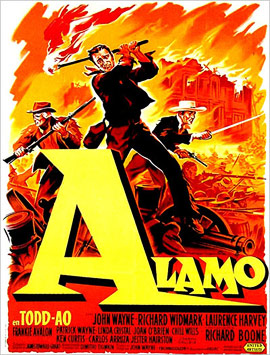 And the cost for all this? With a grimace, Harris says that it might be as high as $1.5 million.
And the cost for all this? With a grimace, Harris says that it might be as high as $1.5 million.
What? That’s all?
To put it in perspective, the bottled water on your latest Tom Hanks’ picture has a higher budget.
MGM has given no response, other than that from Trish Francis, Sr. VP Library Rights Management. Her message reads:
“Thank you for your email. I have spoken with our Technical Services staff who assured me that the film is not in danger of being lost. They proactively and routinely monitor and assess the condition of the various elements of all of MGM’s films and take steps as needed to protect and preserve them. The film is a valuable part of film history and naturally want to protect it. We appreciate your interest in The Alamo. I will mention your concerns to the appropriate people.”
One can’t imagine them turning down a single or cumulative donation specifically toward the restoration of The Alamo. But, according to Harris, the thought has been given no traction.
“One of the most important ways people know of the extraordinary gift of freedom given to Texas and our nation by those who defended the Alamo is by virtue of this film,” he said. “Although an imperfect representation historically, John Wayne’s work brilliantly portrays that larger than life tale, capturing the hearts and creating lasting memories for all who experience this great film. We are attempting to pull this important film back from the very brink of extinction and preserve it for generations to come.”
All concerned wish there was a quick happy ending – that MGM would fork over a pittance or allow Harris and his band of renegades the opportunity to find the money through other avenues and then allow the master magician to perform his magic.
However, after visiting with Robert Harris, one is reminded of the terrific line Rooster Cogburn says to young Mattie Ross as she heads down to get water from a creek unescorted in True Grit:
“Better for you than whoever comes up against you.”
- Bud Elder
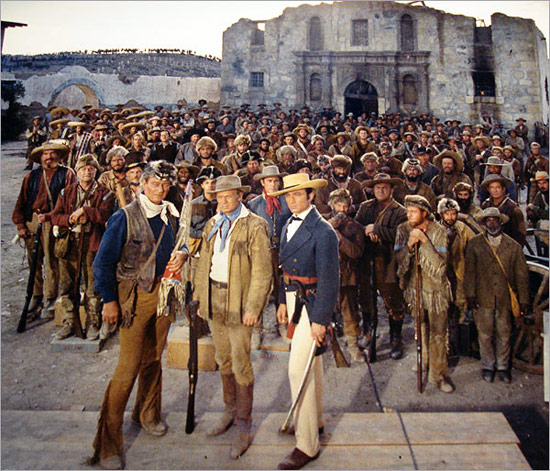
(Photo Credit: Images provided by Robert Siegel)




